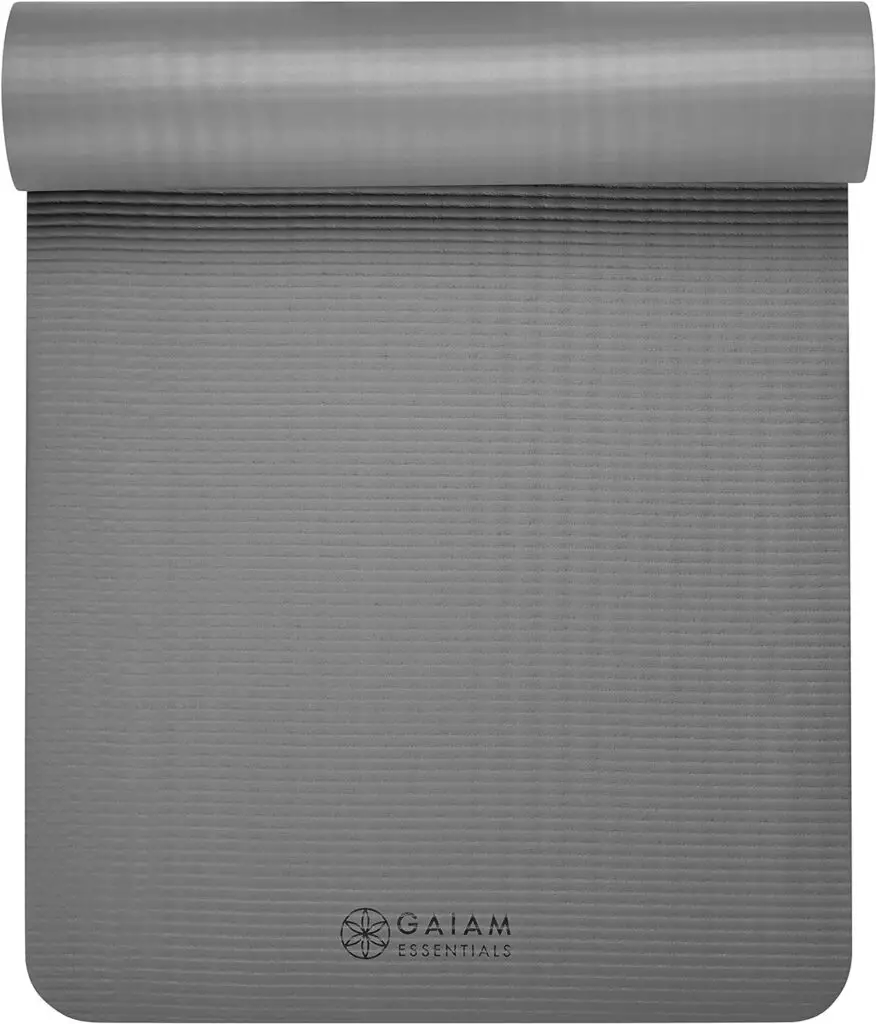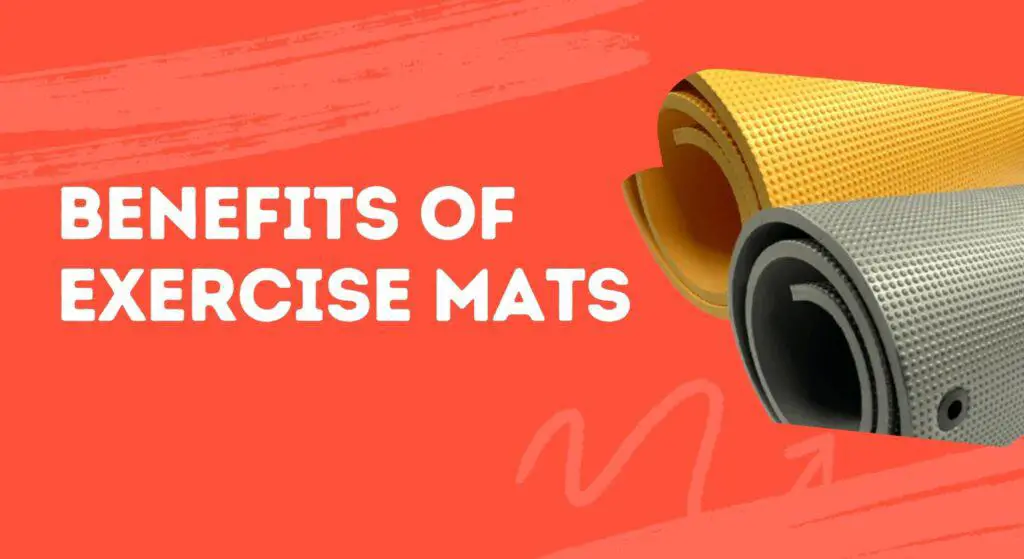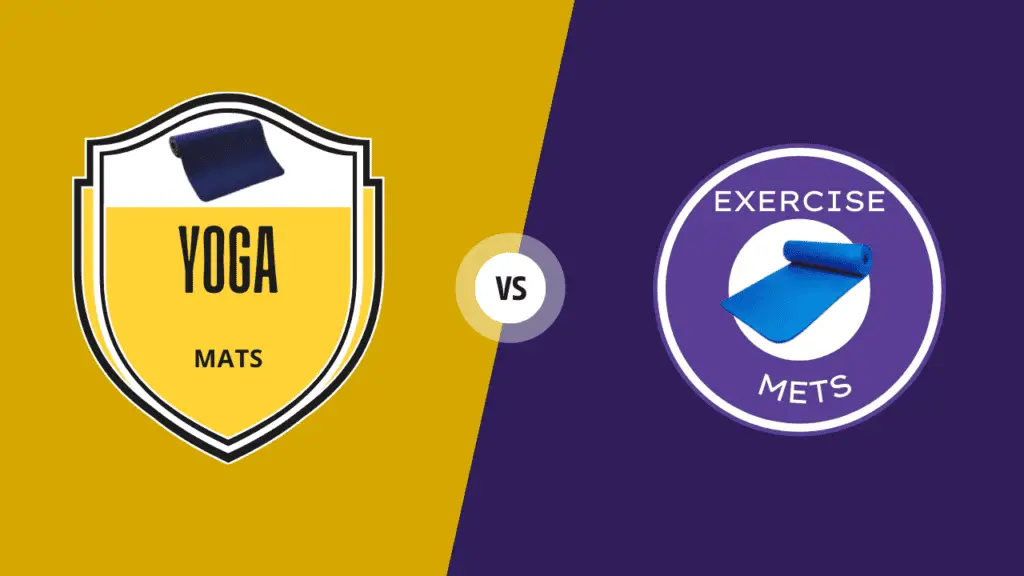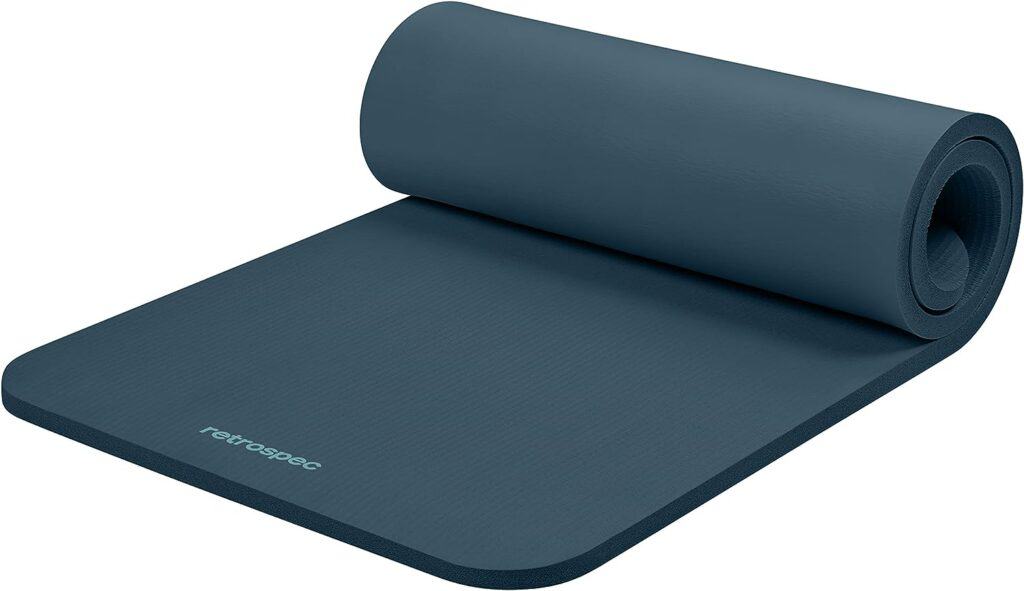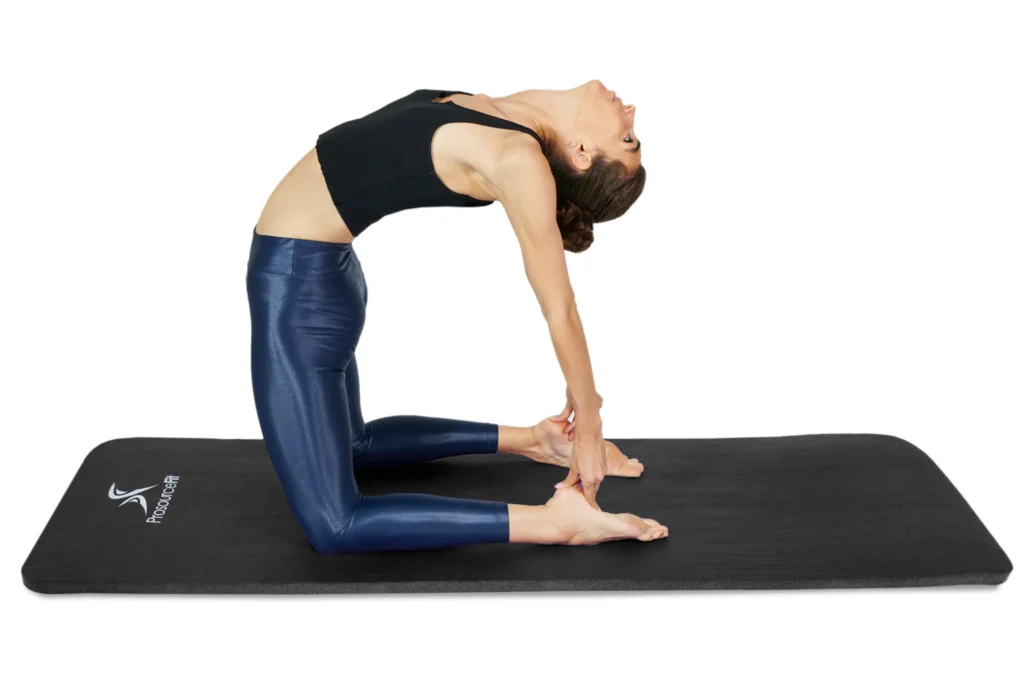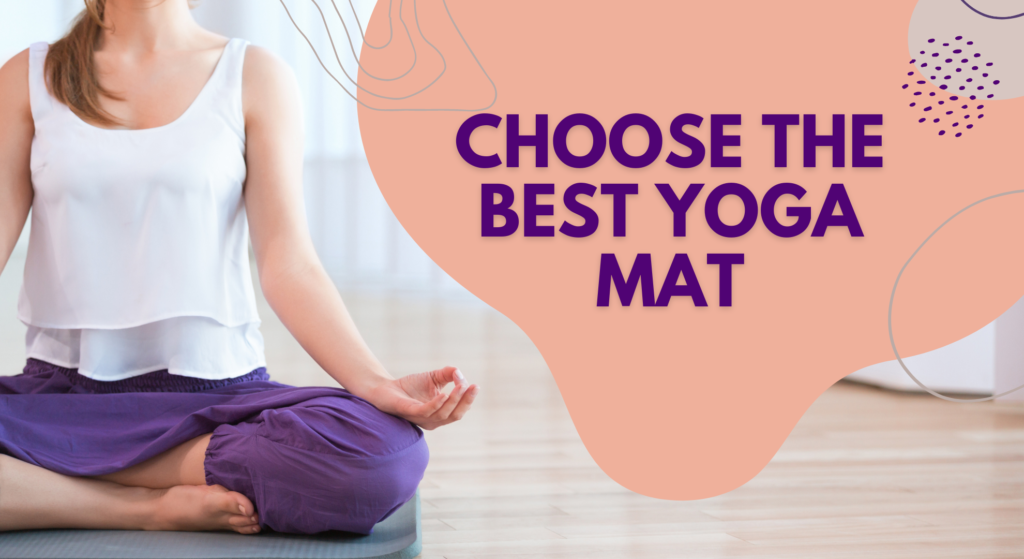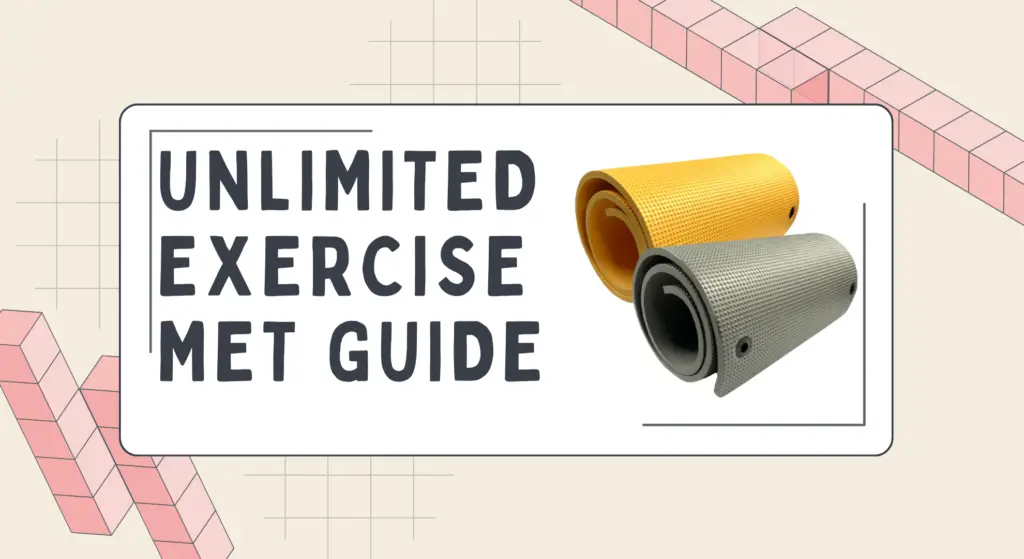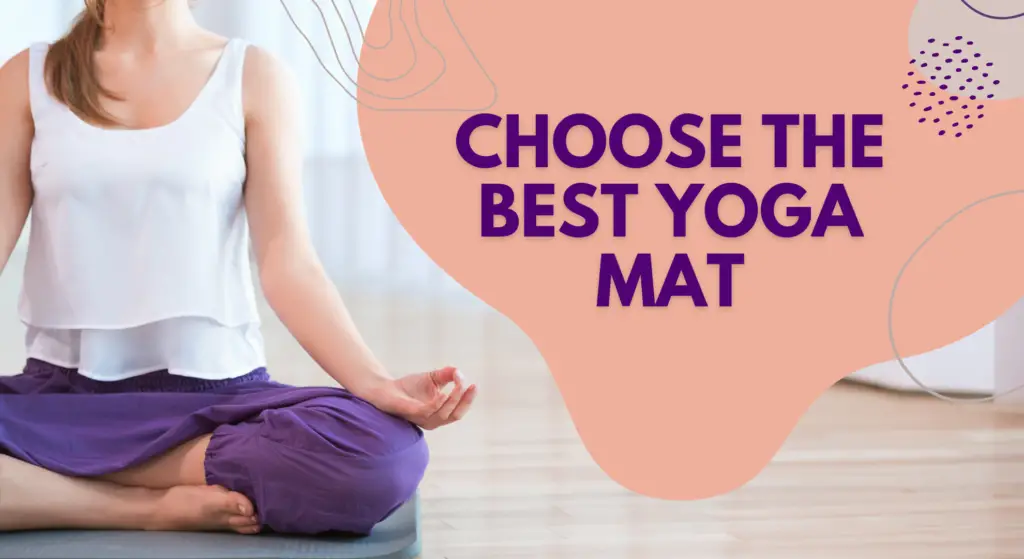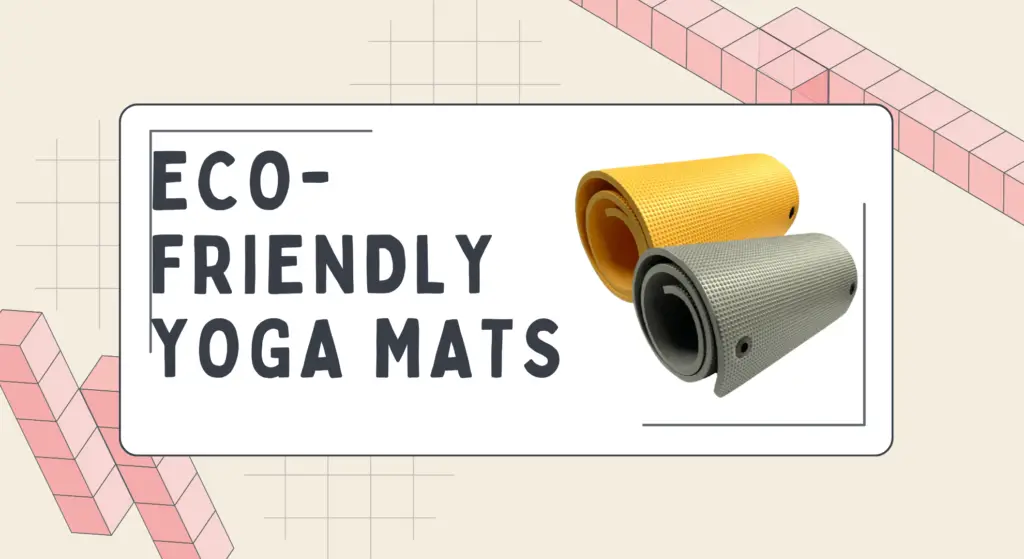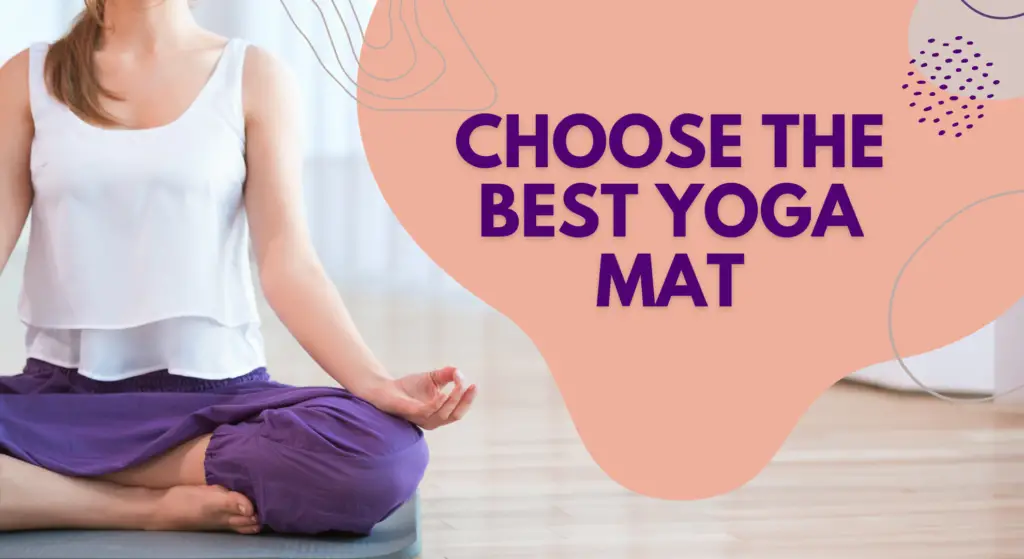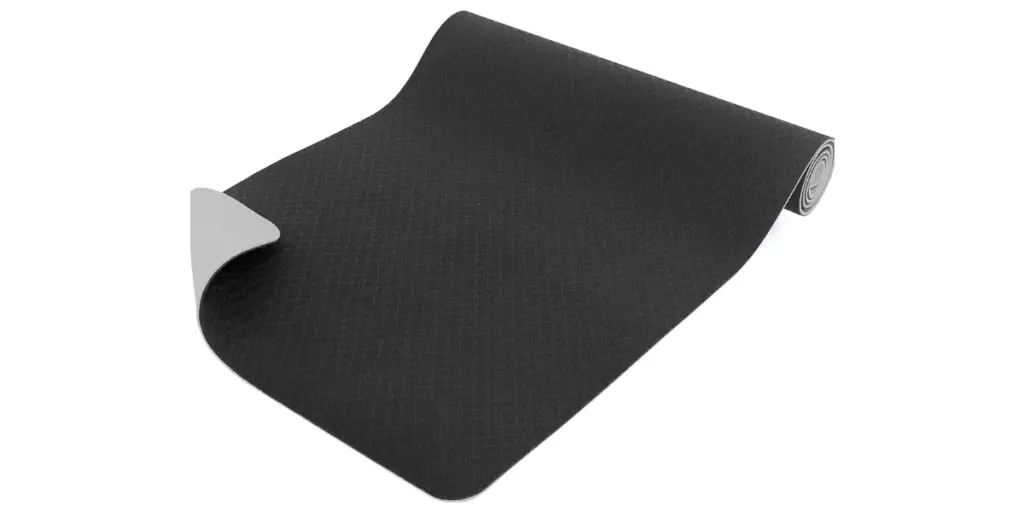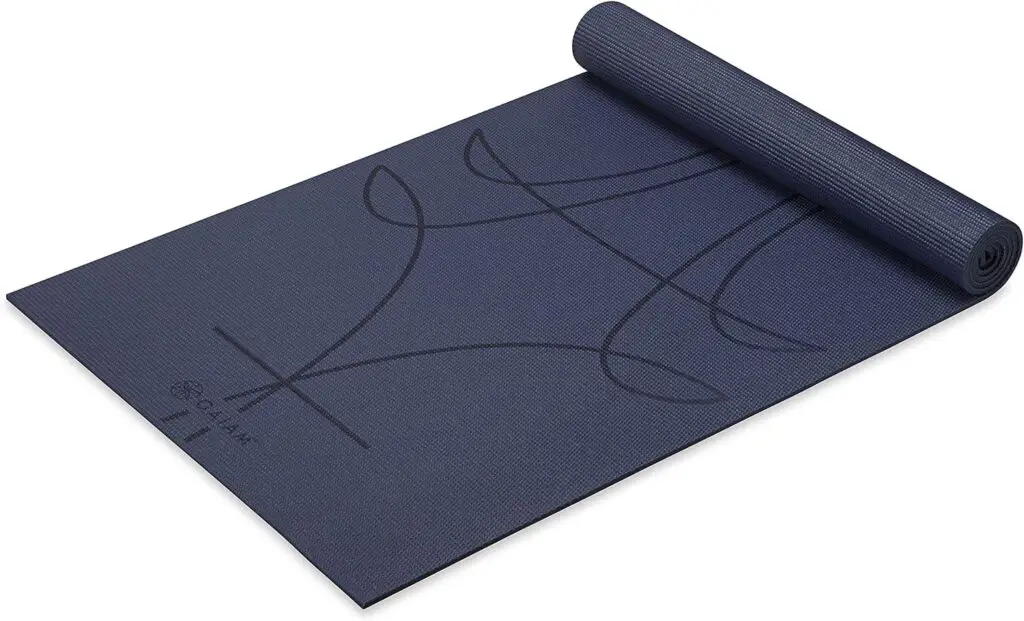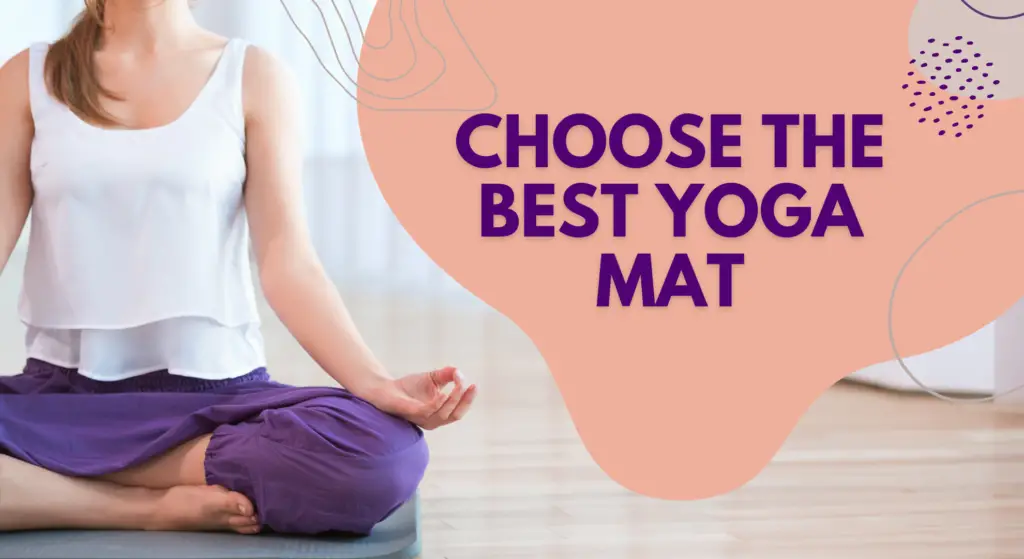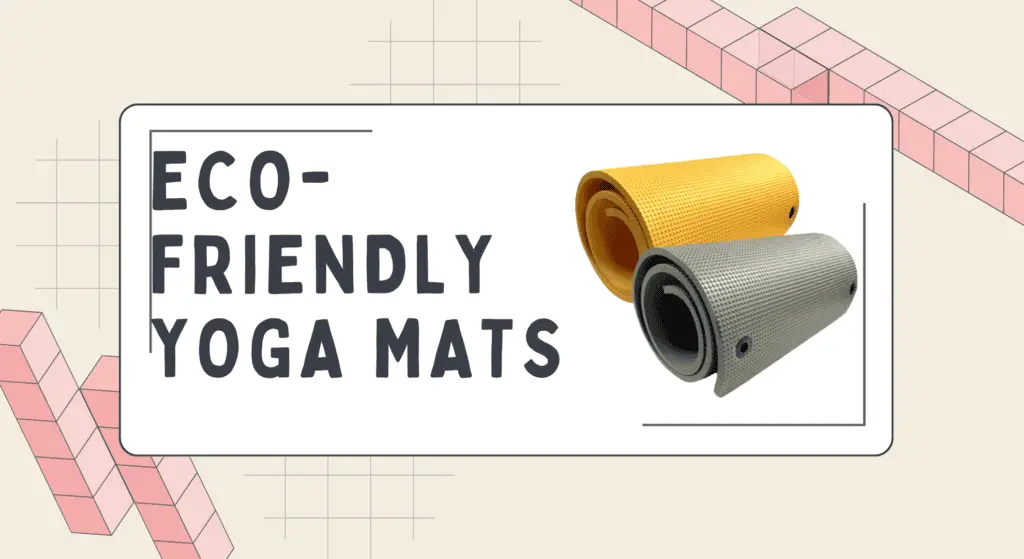
Yoga has absolutely exploded in popularity over the past decade, with over 30 million practitioners in the United States alone. As more people unroll their mats in search of mindfulness, flexibility, and inner peace, the yoga industry has unfortunately created an ocean of waste. Standard yoga mats are most often made from PVC or EVA foam – materials that end up clogging landfills and leaching toxins. Clearly, there’s a disconnect given yoga’s aim of living harmoniously.
That’s why the eco-conscious yogi needs an environmentally friendly yoga mat made of natural, non-toxic, biodegradable materials. Choosing a sustainable mat aligns perfectly with yoga’s peaceful principles by treading lighter on the earth. This article will cover the pros and cons of the top eco-friendly yoga mat options to match your practice and budget.
Problems With Standard Yoga Mats
Most standard yoga mats are made using PVC, which contains phthalates and other toxic chemicals that can leach out over time. The manufacturing process of PVC also releases dioxin and vinyl chloride into the environment.
Other common mat materials like EVA foam or rubber are very difficult to recycle. As more students unroll their mats, the pile of discarded ones keeps growing. By some estimates, over 8 billion pounds of yoga mats get tossed into landfills every year in the US alone.
Considering yoga’s spiritual roots of living in balance and harmony, that’s an alarming amount of waste being created. Eco-friendly yoga mats provide an excellent solution.
Benefits of Eco-Friendly Yoga Mats
Eco-friendly yoga mats offer numerous advantages over standard options:
By investing in an eco-friendly mat, yogis can walk the talk of living gently on the planet while still enjoying an effective surface for their practice.
Key Considerations When Selecting an Eco-Friendly Mat
With more yoga mat companies offering sustainable options, it can get overwhelming trying to pick the right one. Here are the key factors to consider:
Materials Used Cork, jute fiber, organic cotton, and natural tree rubber or latex are most common. Ensure they are certified organic when relevant and from sustainable harvesting.
Biodegradability
The mat should decompose naturally without toxic chemicals leaching.
Company’s Sustainability Initiatives Research the brand’s commitment to the environment. Do they use renewable energy in production? Offset carbon emissions during shipping? Ethically sourced materials?
Price Point Eco-friendly mat prices span from budget picks under $50 up to $200+. Set your budget but expect to invest more than a standard mat.
Texture and Grip The surface needs enough tackiness for yoga poses without being too sticky to adjust positions.
Cushioning and Density
Better cushioning provides more joint support but a denser mat is more durable. Balance your needs.
Odor Some natural rubber mats have an odor at first so look for low VOC options.
Care and Cleaning Choose materials that won’t easily develop mildew or bacteria. Clean with gentle, nontoxic sprays.
Size Variations Standard sizes are 24 x 68 inches but pick a thicker option for better joint padding.
Best Natural Rubber Yoga Mats
Natural tree rubber has a good grip and cushioning. Manufacturing it is also less toxic than synthetic materials. Two top options are:
#1. Gaiam Classic Jute Yoga Mat
For the budget-conscious eco-yogi, the Gaiam Classic Jute Yoga Mat checks all the boxes with excellent sustainability at a bargain price point under $30. Made from natural tree rubber sustainably tapped from trees and long-lasting jute fibers, the Jute yoga mat provides enough cushioning and grip for even daily yoga practices. Though not the toughest pick, the 5mm thick rubber and jute surface pairs durability with affordability in a mat you can feel good about to downward dog.
PROS
CONS
#2. Hugger Mugger Para Rubber Mat:
Crafted from natural tree rubber harvested using sustainable tapping methods, the Hugger Mugger Para Rubber Yoga Mat provides the ideal grippy texture for yogis looking to tread lightly on the planet. Its 5mm thickness cushions joints without sagging, accented by a intricate mandala design lining the bottom. Though on the pricier side at $110, this durable fair trade mat aligns your practice with yoga’s peaceful principles.
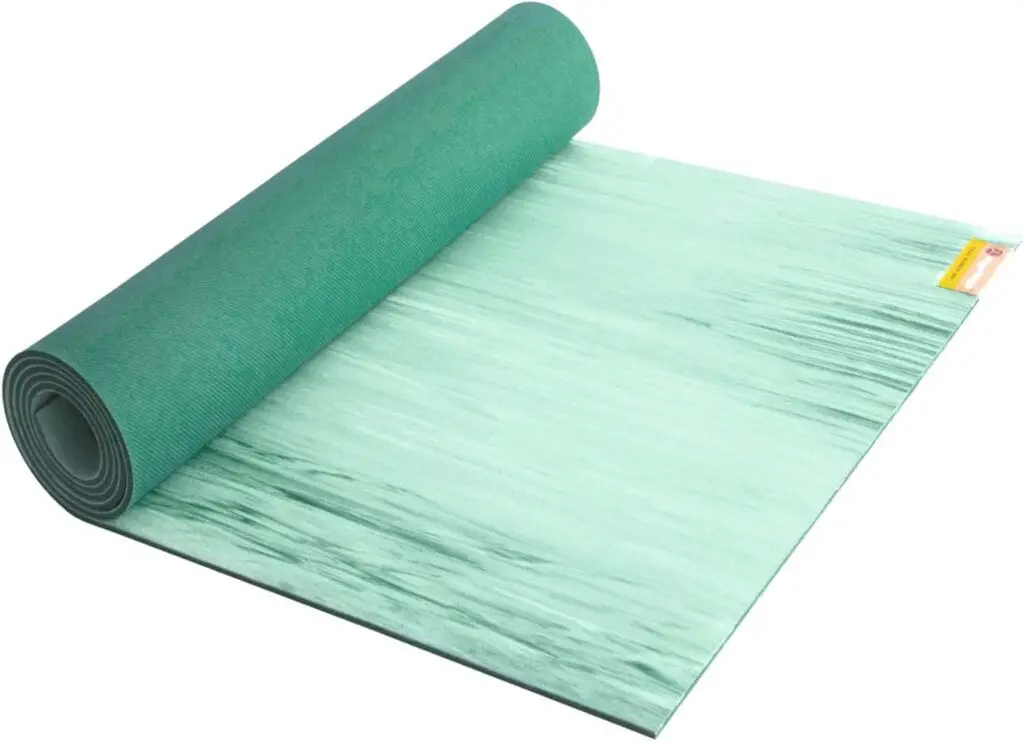
PROS
CONS
Both Gaiam and Hugger Mugger craft high-quality eco-friendly mats from renewable natural tree rubber harvested using sustainable tapping methods. The Gaiam jute and rubber mat is very affordable for a greener choice while the Hugger Mugger mat offers thicker padding and a grippier texture.
Best Organic Cotton Yoga Mats:
For super soft sustainability, organic cotton yoga mats make excellent chemical-free choices:
Manduka eKOlite Yoga Mat:
The Manduka eKOlite mat is a simple, affordable eco-friendly yoga mat option made from biodegradable natural tree rubber and dense organic cotton. At 4mm thin with a basic grip, it provides a lightweight and firm surface for all types of yoga practice. Though slippage can be moderate, its bare cotton design and sustainability make it a great budget green choice under $50 for yogis just dipping their toes into eco-options.
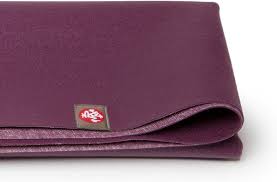
PROS
CONS
HemingWeigh Extra Thick Cotton Mat:
With indulgent 10mm padding, the HemingWeigh Extra Thick Cotton Yoga Mat provides unparalleled cushioning for joint protection during floor poses. Crafted from ultra-soft yet durable organic cotton, its cloud-like density takes sustainability to the next level by planting a tree for every purchase. Despite the high price around $100, sensitive knees and wrists will thank you through this plush mat’s extended longevity.
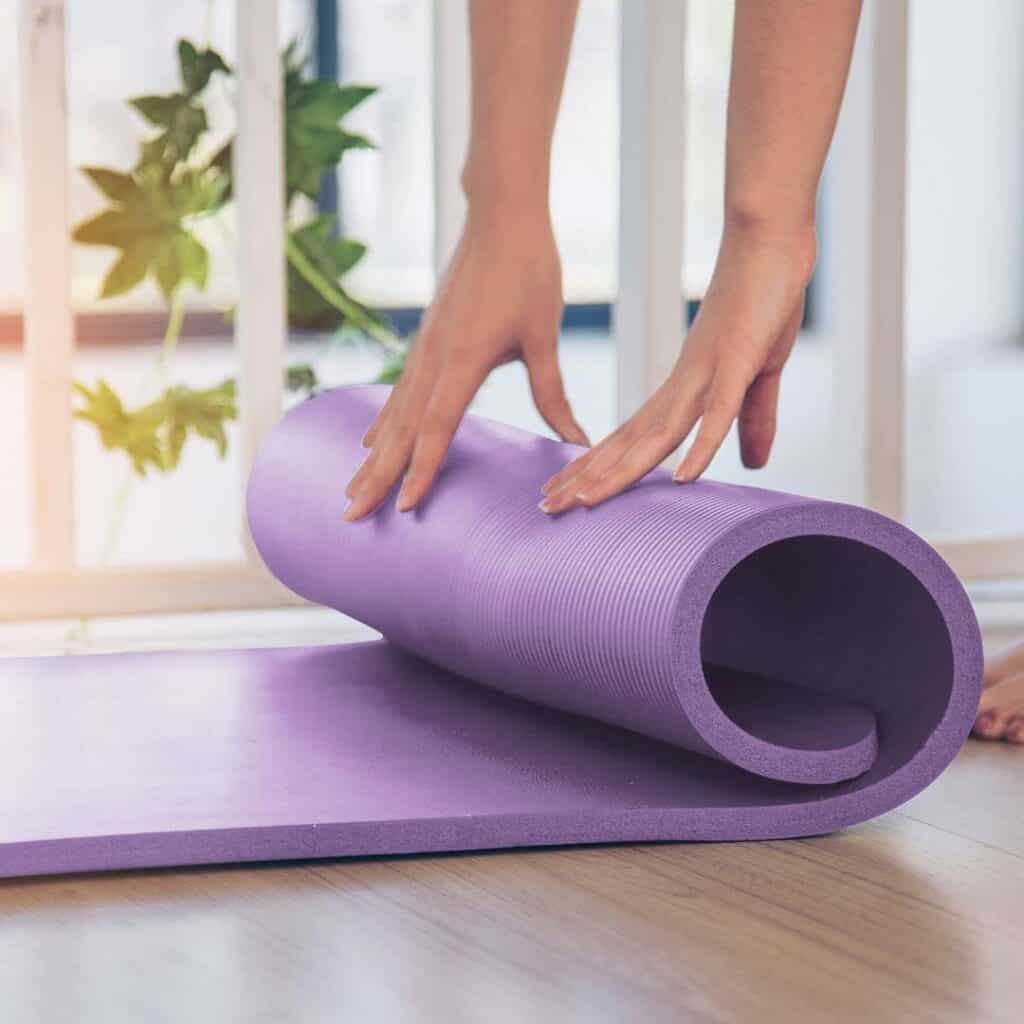
PROS
CONS
Best Cork Yoga Mats
As a rapidly renewable resource harvested from tree bark, cork offers a gripping, antimicrobial surface that’s perfect for yoga:
Aerolite Cork Yoga Mat:
PROS
CONS
Guru Cork Yoga Mat:
PROS
CONS
Both Aerolite and Guru craft high-quality cork yoga mats perfect for the eco-conscious yogi. The antimicrobial cork grips skin to support standing balancing poses while providing an naturally sustainably material. For extra padding, consider adding a cotton blanket.
Best Jute Fiber Yoga Mats:
Jute fiber yoga mat offer excellent slip-resistance and cushioning. Derived from burlap fabric, jute is incredibly strong and durable. Two exceptional options include:
HemingWeigh Natural Jute Fiber Mat:
PROS
CONS
Ikea Ribba Cork-Backed Jute Rug:
PROS
CONS
If you don’t mind a rustic style, the Ribba jute rug from Ikea re-purposed as a yoga mat is an unbelievable eco-budget find under $25. Pair it with a cork mat for extra padding during floor poses. Or for a purpose-built jute yoga mat with better padding, the HemingWeigh mat is extremely durable and sustainable.
Top Eco-Friendly Yoga Mat Recommendations:
After extensive research on materials, sourcing, quality, and value, here are my top picks for the best eco-friendly yoga mats in 2023:
Budget Pick Under $50: Gaiam Jute Yoga Mat With a durable jute upper, natural tree rubber base, and an affordable price tag under $30, the Gaiam Jute mat is a fantastic budget-conscious choice for the eco-friendly yogi.
Best Natural Rubber: Hugger Mugger Para Rubber Mat Made sustainably from tree sap without harming the trees, the Hugger Mugger Para Rubber Mat earns rave reviews for its grippy texture and plush 5mm cushioning.
Most Supportive: HemingWeigh Extra Thick Cotton Mat
The indulgently thick 10mm HemingWeigh 100% organic cotton mat offers unmatched joint padding for sensitive knees and wrists during floor poses.
Best Cork: Guru Cork Yoga Mat Harvested sustainably from tree bark, the Guru Cork Mat provides an antimicrobial grip to stabilize standing balances paired with recycled rubber backing for stability.
Most Versatile: Ikea Ribba Cork-Backed Jute Rug At just $25, the Ribba jute rug can be creatively re-purposed as a budget eco mat in versatile sizes. Use underneath a regular mat for added cushioning too!
I hope these specific recommendations help narrow down the perfect eco-friendly yoga mat to match your individual practice needs and budget! Let me know if you have any other questions.
Elevate Your Experience: Before Read this article after you will move to next article
- The 7 Best Yoga Mat for Bad Knees to Reduce Pain and Discomfort
- The Ultimate Yoga Mat Buying Guide
Discover the 7 Best Yoga Mat for Bad Knees to Reduce Pain and Discomfort
Conclusion:
As yoga’s popularity spreads across the globe, it’s important for yogis to walk the talk of peace and environmental harmony by choosing sustainable gear. Eco-friendly yoga mats made of natural materials like organic cotton, latex, jute, and cork offer excellent biodegradable options that avoid toxic chemicals and landfill waste.
While pricier than standard mats, investing more upfront supports companies using ethical manufacturing and trails lighter on the planet for future generations to enjoy the gifts of yoga as well.
The best eco-friendly yoga mats strike the perfect balance between cushioning joints, gripping skin, and treading lightly on the earth. Brands like Gaiam, Manduka, Aerolite, and HemingWeigh offer high-quality sustainable mat picks to match different budgets and practice styles.
So when unrolling your mat for your next downward dog, choose an eco-friendly option instead of PVC. Your body and the planet will thank you through healthier alignment and harmony.
Frequently Asked Questions About Eco-Friendly Yoga Mats

Are eco-friendly mats slippery? It depends on the materials and texture. Some organic cotton options lack grip, while jute, cork and natural rubber provide sufficient traction for most people. Read product details or ask the manufacturer about stickiness if uncertainty. Using a towel between hands/feet and mat can also prevent slipping.
How thick should an eco-friendly yoga mat be? Standard mat thickness ranges from 3-7mm, with 5mm as ideal for both cushioning and stability. Thinner budget picks around 4mm work okay if used over carpet or a towel. If you have sensitive joints, splurge for extra dense 7-10mm padding.
Will an eco-friendly mat develop odors and mildew?
Some new natural rubber mats have an initial odor that fades within a few weeks. Properly cleaning and airing out the mat regularly prevents lingering smells and mildew buildup. Look for antimicrobial materials like cork or jute that discourage bacterial growth.
How long do eco-friendly yoga mats last? Materials impact longevity. With proper care, jute and natural tree rubber will last 5+ years. More delicate organic cotton averages 1-2 years with frequent use before showing wear. Rotate through 2+ eco mats to allow them to fully air out between practices.
What’s the most sustainable yoga mat? No single material is definitively the “most” sustainable, but natural tree rubber scores high marks for using renewable resources and responsibly tapping trees without harm. Organic cotton, cork and jute also make excellent eco-friendly choices based on their materials and production methods.
